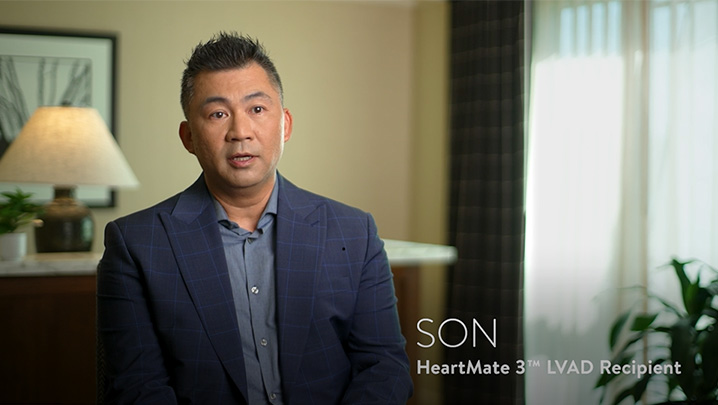Videos for Patients
Our patient videos help patients with heart failure understand more about their condition, as well as the options available to them for treatment.
Pre-Implant Patient Education
Understand the Possibilities with LVAD Therapy
These are the faces of real people diagnosed with heart failure. Now after choosing the HeartMate 3 LVAD System, they are here to share their experiences and how they are living life to the fullest.
Grey's Story – HeartMate 3 LVAD
Lisa's Story – HeartMate 3 LVAD
Dennis' Story – HeartMate 3 LVAD
Loren’s Story – HeartMate 3 LVAD
Kyla’s Story — HeartMate 3 LVAD
Martha’s Story – HeartMate 3 LVAD
David’s Story – HeartMate 3 LVAD
Ron’s Story — HeartMate 3 LVAD
Bouba’s Story – HeartMate 3 LVAD
Son’s Story – HeartMate 3 LVAD

Grey's Story – HeartMate 3 LVAD

Lisa's Story – HeartMate 3 LVAD

Dennis' Story – HeartMate 3 LVAD

Loren’s Story – HeartMate 3 LVAD

Kyla’s Story — HeartMate 3 LVAD

Martha’s Story – HeartMate 3 LVAD

David’s Story – HeartMate 3 LVAD

Ron’s Story — HeartMate 3 LVAD

Bouba’s Story – HeartMate 3 LVAD

Son’s Story – HeartMate 3 LVAD
These testimonials relate an account of an individual’s response to the treatment. The patient’s account is genuine, typical and documented. However, it does not provide any indication, guide, warranty or guarantee as to the response other persons may have to the treatment. Responses to the treatment discussed can and do vary and are specific to the individual patient.
MAT-2102419 v6.0
